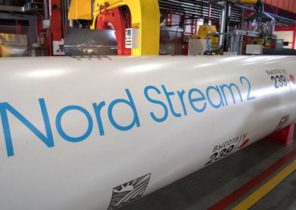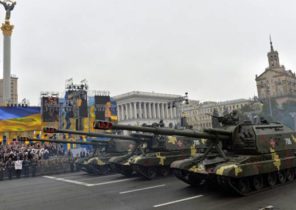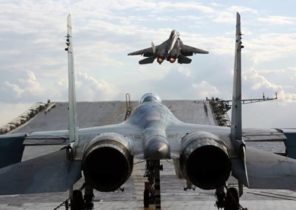
On 15 may the Minister of energy of Saudi Arabia Khalid al-falih (Khalid al-Falih) and his Russian counterpart Alexander Novak, borrowing the famous formulation, European Central Bank President Mario Draghi (Mario Draghi), who participated in the rescue of the Eurozone, said he will do everything possible to reduce oversupplied world oil market. On the eve of the meeting of the Organization of countries-exporters of oil (OPEC), may 25, the two Ministers made a statement to extend previously agreed by the parties to limit the production for nine months, i.e., until March 2018, which will keep oil prices at around $ 50 per barrel. Edition of the Economist gives his assessment of what is happening in the fuel market. According to British experts, to consolidate this temporary improvement, probably, should be guided by the motto “know your enemy”. No more, no less.
The authors of the article in the Economist write that in the last two and a half years, OPEC could not come to a joint decision as to what to do with the fall in oil prices. At the same time, notice how cynical British experts, OPEC itself has not changed only one: the oil countries had underestimated the ability of American shale gas producers — their sworn enemies in the battle of sheikhs vs shale, is to use a more efficient financial techniques that allow them to survive in a period of significant decline in prices. The salvation of American producers was their ability to be used for fundraising, the capital markets and the markets of futures and options to hedge against dangerously low prices. And only recently the cartel has finally realized the effectiveness of this strategy. However, as analysts notice, it is unclear whether it will solve the existing problems.
The most obvious challenge, according to experts, which manufacturers of slate left OPEC in the current decade, using the method of hydraulic fracturing, or fracking, for quick and cheap oil production at fields that were previously considered unprofitable. When in 2014, OPEC finally realized this, he started to literally “fill” the world with oil to drive out competitors from the market, whose price of production were high, despite the fact that the losses suffered and the members of the cartel.
However, experts say that OPEC has lost sight of the less obvious changes. Fracking — more predictable business than the “wild” oil exploration when the money is literally pouring into the well in the hope of a large profit. An expert consulting firm Mobius Risk Group, John Saucer (Saucer John), aptly noted that shale gas has made oil production more similar to the industrial business, compared to expensive mining.
This makes it easier to raise funds to increase production, allowing manufacturers to spend money far exceeding their cash flows. Saucer said that the most efficient companies in the shale minerals are supported, including investors from private equity funds and pension funds that require a high but reliable earnings. These investors rather hedge production in order to protect these profits, than make a bet that the price of oil reaches $ 100 per barrel. “Hedging is very systematic and transparent,” says the analyst. “They are not engaged in speculation on the commodities market”.
This is confirmed by the U.S. Commission on commodity futures trading (Commodity Futures Trading Commission). According to the Commission, energy and other non-financial companies sell futures contracts with a total volume of one billion barrels of oil brand West Texas Intermediate (WTI). And it’s more than twice the level of five years ago and compared to 16% in 2012, accounting for a quarter of the market. Most of this has to deal in insurance risks from potential fluctuations in the oil market, however, as noted by analyst John Saucer, these data do not reflect all and do not include bilateral transactions with large banks and energy companies.
As the Economist writes, the members of OPEC and the exporting countries outside the cartel, unwittingly stimulated the hedging of the fact that at the end of last year, artificially increased oil production; however, when it was decided to cut production from 1 January, the trend still continued. Conflicting policies contributed to a decrease in spot prices relative to futures prices of WTI, maintaining the upward slope of the price curve on the futures, known as “contango situation”. It is made more attractive sale of raw materials future supply and led manufacturers to increase production of oil.
That high level of production of shale minerals will continue, evidence of active and continuing increase in the number of drilling rigs. As suggested in the U.S. government organization Energy Information Administration, the following year, the United States will produce 10 million barrels of oil a day, which is above the last high achieved in April 2015. Thus, the U.S. will be equal with Russia and Saudi Arabia. Producers of shale oil will gain market share to the detriment of those countries.
In response to this desperate interventionists, apparently, intend to return the curve of futures prices as “backwardation” when short-term rates above long term. The goal is to prevent the accumulation of excessive stocks of crude oil and the practice of hedging. However, success is not guaranteed.
Recently the International energy Agency (International Energy Agency) said that even if the effect of the decision on production cuts will be extended, all the same, in the second half of 2017, will require additional measures to reduce stocks of crude oil to the average level of the past five years. And this is the official goal of Khalid al-falikha and Alexander Novak. In addition, the Agency’s analysts draw attention to the fact that Libya and Nigeria — two members of OPEC, not falling under the restrictions due to the difficult political situation in recent years, dramatically increased its production, possibly undermining the efforts of other exporting countries.
Experts notice that this year the global demand for oil was lower than expected. Analysts of the consulting company Roland Berger, believe that the demand for oil in industrialized States peaked. In countries with rapidly growing economies such as China and India, with the development of industry, oil is used more and more efficiently. Therefore, experts are not without reason to believe that today there are many factors that raise doubts about the prospects for growth in oil prices.
British experts give a not very happy conclusion, and say that, ultimately, the producers of shale oil “will get what they deserve”. Thus, the shortage of manpower and equipment will lead to higher production costs and higher interest rates will cool the enthusiasm of investors. “Unnecessary luxuries” can stimulate the overproduction to the extent that it would lead to the collapse of prices. The British believe that at the moment Saudi Arabia seems tying OPEC in the war that the organization cannot win. The Economist experts lead a memorable expression of the Director of LCM Commodities of Pierre Lacaze (Pierre Lacaze): she took a knife to a gunfight. Worse, it hurt primarily themselves.
It is clear that this concerns, primarily, the Saudis. Other oil-producing countries are not so much interested in the windfall, how much of the predictability of the market and stable oil prices.







